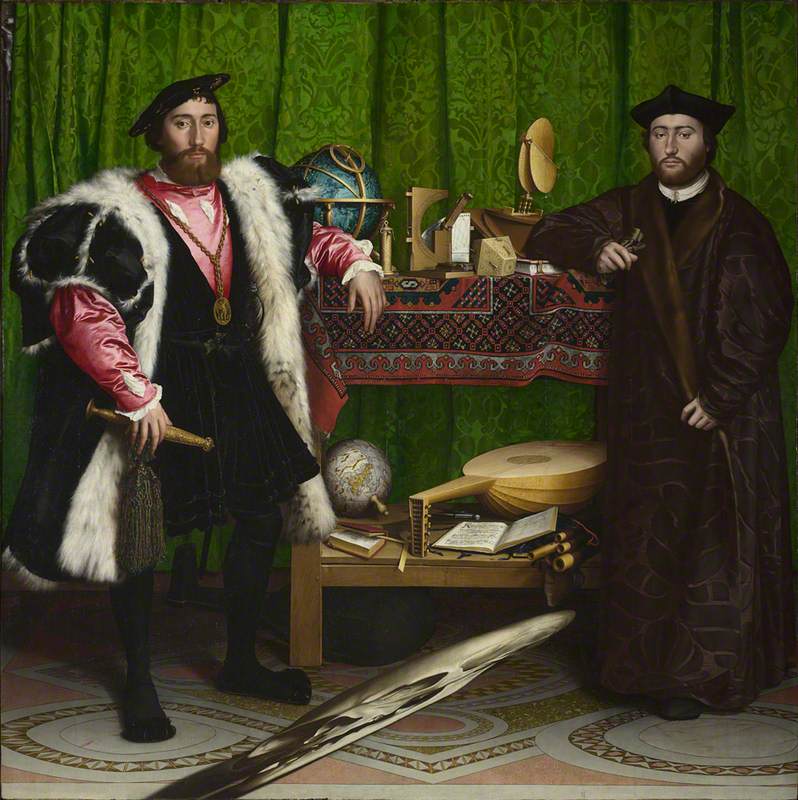'The Ambassadors' by Hans Holbein the Younger
This audio clip describes The Ambassadors by Hans Holbein the younger (c.1497–1543).
It has been created for use as part of our primary school resource, The Superpower of Looking, in order to support pupils with blindness or visual impairment to take part in the lessons.
Explore the painting further in Holbein paints two visitors to the Tudor court.
An audio and tactile book of the painting can also be borrowed from Living Paintings.
Jean de Dinteville and Georges de Selve ('The Ambassadors')
1533
Hans Holbein the younger (c.1497–1543)
Full audio description text
The Ambassadors was painted by Hans Holbein the younger with astonishing realism in 1533. In oil paint on oak, it's big – about two metres square: just a little wider than tall. The two men, ambassadors in the court of King Henry VIII, stand life size, either side of a set of two wooden shelves, on a marble mosaic floor against a rich green curtain.
They wear clothing of the time – for the wealthier-looking man on the left, that's a black box coat trimmed with white fur with huge puffed sleeves over a black velvet knee-length jerkin, black stockings and shoes. His shirt, of gleaming pink satin, has decorative cuts at the neck and near the cuffs where the white of his fine cotton undershirt puffs through. He wears a medal with a sculpted figure of an angel slaying a dragon. In his right hand, he clasps an ornate dagger inscribed with his age: 29. He looks at us, one arm resting on the upper of the two shelves.
His fellow ambassador adopts the same pose. This man is dressed more plainly in a floor-length brown fur coat that he holds closed with his bare left hand, the warm fur on the inside. The leather outside is textured where the skins of many small animals have been stitched together. Where the coat collar crosses his chest, it reveals a plain black shirt and the simple round collar of his cream undershirt tied by two strings. His hands are bare but, in his right, he clasps a pair of gloves. His right elbow rests on a book on the top shelf. Writing on the edge of its closed pages notes his age: 23. His bishop's hat has a square brim with sharp corners while his companion's is shaped like an upturned dinner plate. Both men have a full beard and moustache, but the beard of the man on the right is trimmed more closely to his chin.
Demanding our attention is a clutter of objects on the shelf on which the men lean. It is draped with a richly patterned Islamic rug, Holbein detailing every black and grey stitch on its red background. Resting on the rug are objects for studying astronomy or telling the time. The bottom shelf holds a globe and a music book, open to show the notes. Parts of a wind instrument are tucked in the right corner. In the centre is a lute made of light pinewood. Holbein has depicted the instrument's every string. One has snapped, escaping like a stray hair.
There is a strange creamy-white shape on the marble floor. Hard to understand from straight on, a sideways glance reveals it is a human skull. You need to be standing side-on to the real painting to get the full effect.










